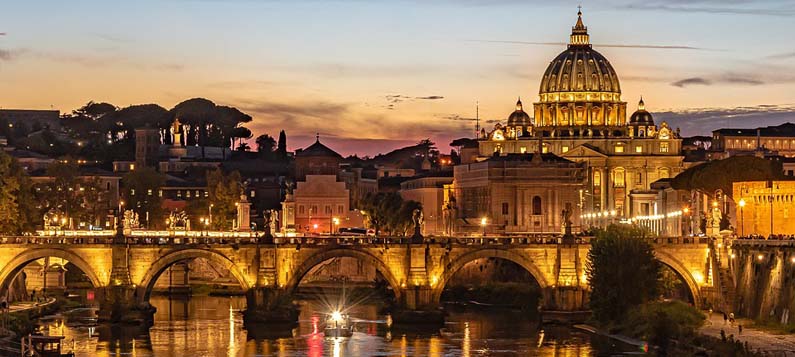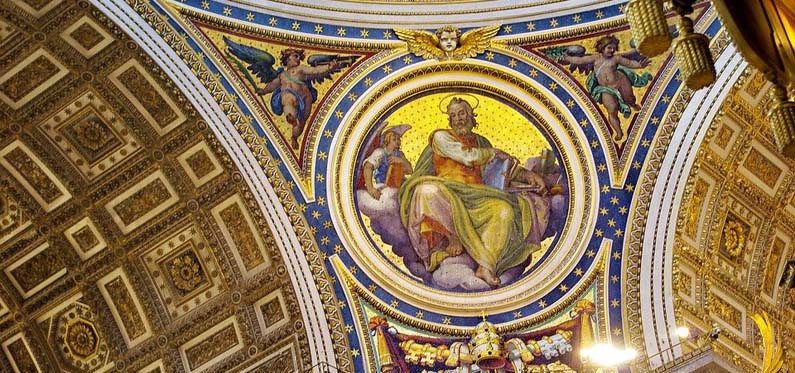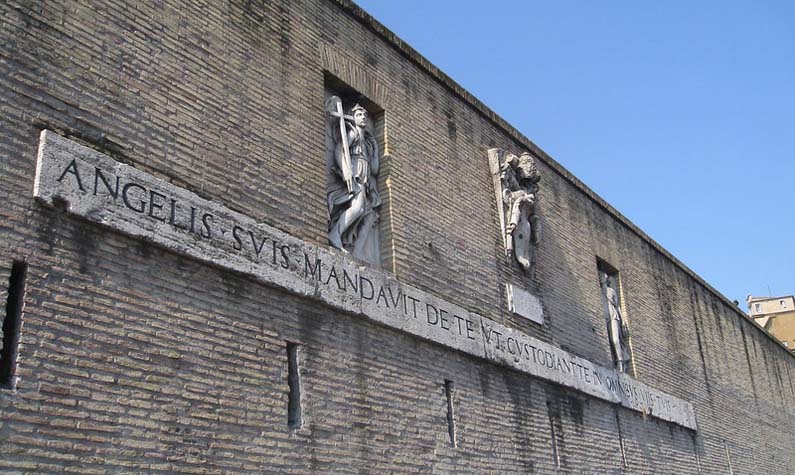3 Fascinating
Things You Might Not Know About Vatican City

Home to the Pope and place
of incredible museums and art, the Vatican is always fascinating to visit.
However, there are some usual places your guide might not tell you about.
Read on to find out more.
1. Vatican Mosaic Studio
The iconic buildings in the
Vatican are full of art, including paintings by renowned artists and mosaics.
Pope Gregory XIII was particularly fond of the beautiful mosaics in the
Vatican and wanted to create more.

The Pope brought Venetian
mosaic artists to Vatican City, wanting them to teach their skills to local
craftsmen in Rome. These artists then began decorating areas in St. Peterís
Basilica, including the Dome of Michelangelo and the stunning Gregorian
chapel.
Besides creating mosaics,
in 1727 the Vatican Mosaic Studio (Studio
del Mosaico Vaticano) was established, where some highly talented craftsmen
and artists still work today, restoring mosaics in St. Peterís Basilica
and more. Using the ďfilateĒ enamels technique, artists could create tiny
mosaic tiles to add to highly complicated mosaics.
Please note the Vatican Mosaic
Studio is off-limits to the general public. However, you can visit accompanied
by an official tour guide.
2. Domus Sanctae Marthae
Most visitors on a tour
of Vatican City book affordable hotels or bed & breakfasts in Rome.
However, for Catholic holy men and the College of Cardinals, Domus Sanctae
Marthae (or Casa Santa Maria) is their lodging of choice. This five-story
building stands on the edge of Vatican City and was built by Pope John
Paul II in 1996 to make things easier for aging clergymen enjoying papal
visits. They had been staying further afield, making the journey to the
Vatican tiring for them.
The building offers 131 comfortable,
but not fancy, rooms, perfect for their stay. However, should the College
of Cardinals be summoned to the Vatican to elect a new Pope, the cardinals
take over the guesthouse. During their visit, windows are shuttered and
locks put in place to ensure privacy. Of interest to note, Pope Francis
made Casa Santa Maria his home when he was first elected as Pope.
3. Vatican Walls
The Vatican City is surrounded
by historic fortifications in the form of a wall. The Medieval and Renaissance
era walls do form a boundary, but do not completely enclose the Vatican.
Like many cities in the past,
the Vatican found it prudent to have fortifying walls surrounding the city.
The first wall was completed in 852, but after an attack by the Saracens
in 846, Pope Leo IV ordered a new wall, covering not only the Vatican,
but also the Borgo district of Rome. This was dubbed the Leonine Wall,
which stretches around 2 miles, encircling Vatican Hill. This meant the
entire Vatican was securely enclosed. However, once the threat has passed
most of the cityís gates were opened.

|
|
Photo by Seth Schoen
on Flickr
|
Since that time, both Paul
III and Pius IV expanded the walls further in the 16th century, mainly
to protect the Vatican from political violence in Rome. More modifications
were made in the 1640s by Pope Urban VIII. While the Vatican
Museums are beautiful, the wall has its own charms, as each gate is
adorned with statuary and carvings.
These walls still enclose
Vatican City today, but of course, anyone can now enter St. Peterís Square
and all six entrances into the Vatican are open to the public. However,
one thing should be noted. While you do not need a passport or visa to
enter the Vatican, even though it is considered a country, you may be asked
for some form of identification. Make sure you have an ID card, driverís
license or passport with you to avoid disappointment.
top
Travel
Blog - Home


|

